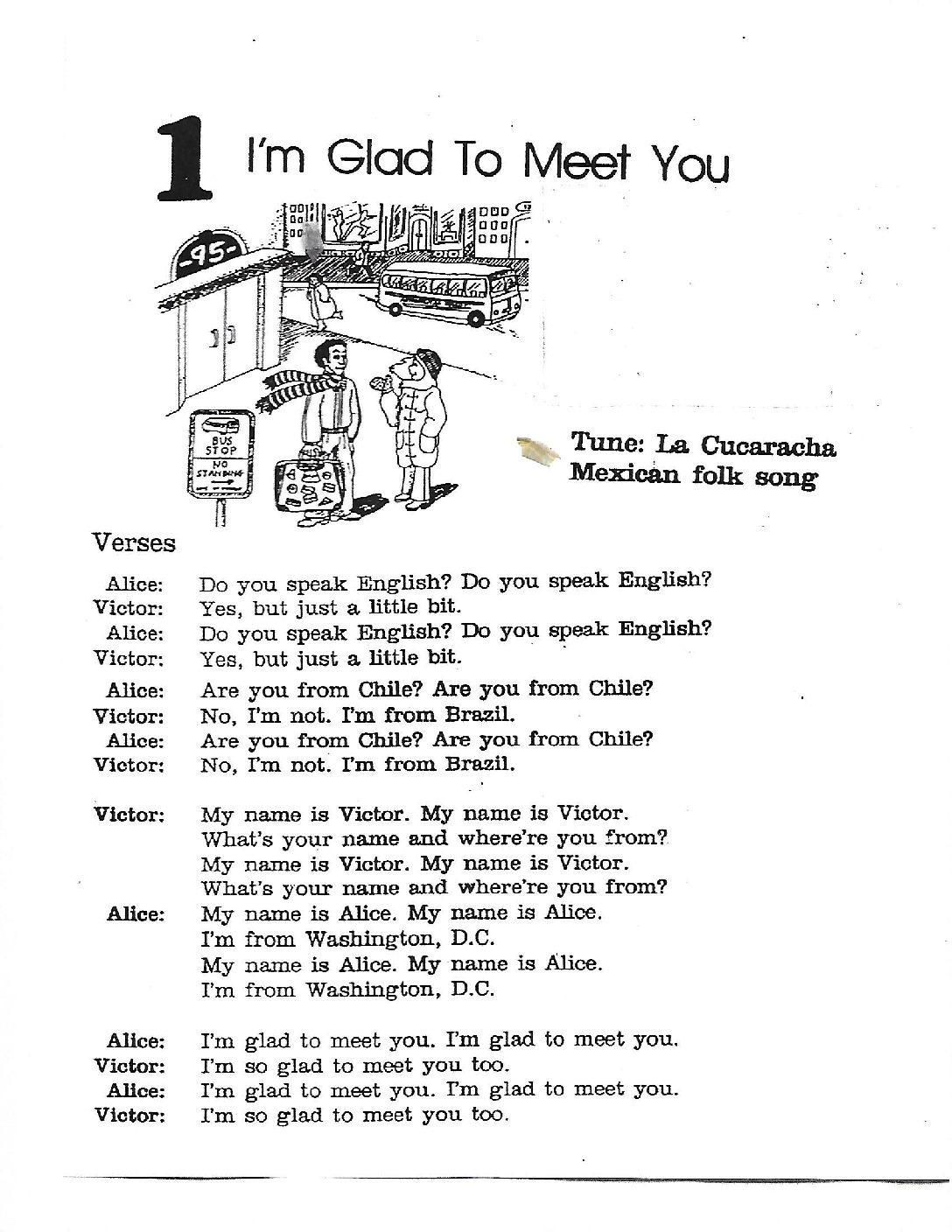
This is one of my all time favorite ways to break the ice with new students, especially at lower levels. I picked this up from an old ESL songbook years ago, but can’t recall the name. The song is to the very familiar tune “La Cucaracha”! Even if singing isn’t your forte, just starting the first line, everyone will immediately join in. If you have a lot of Mexican students, have them sing the real […]